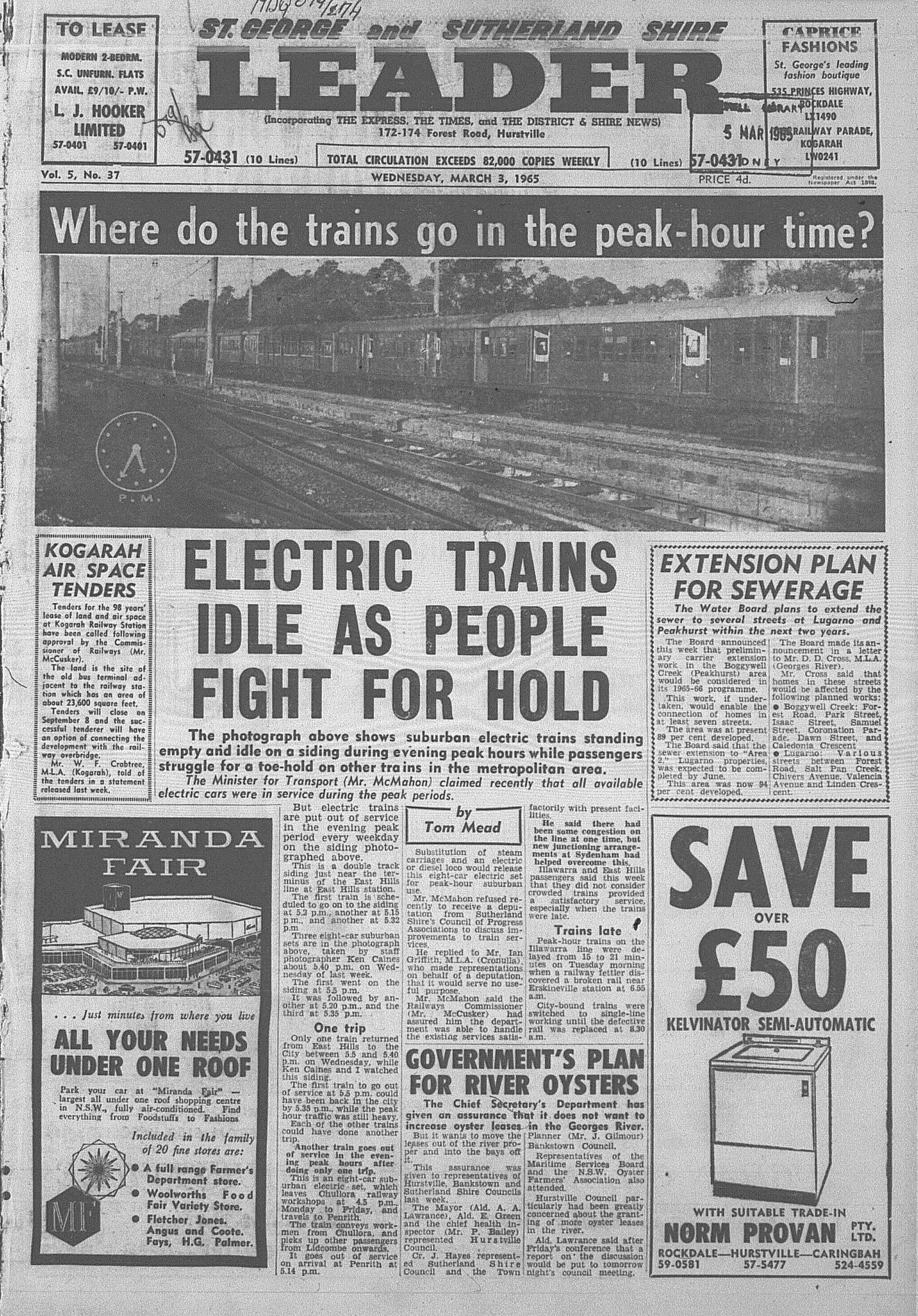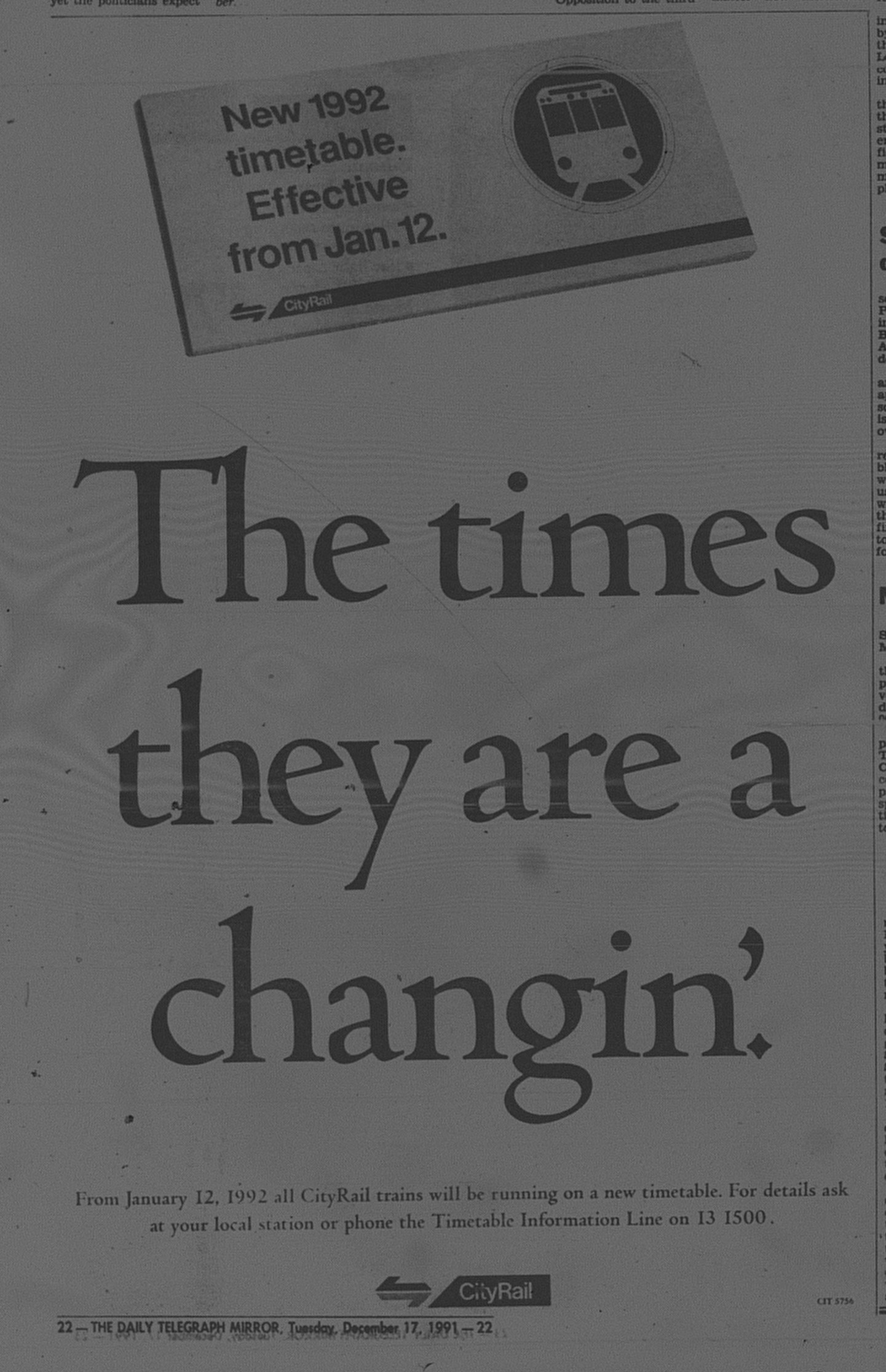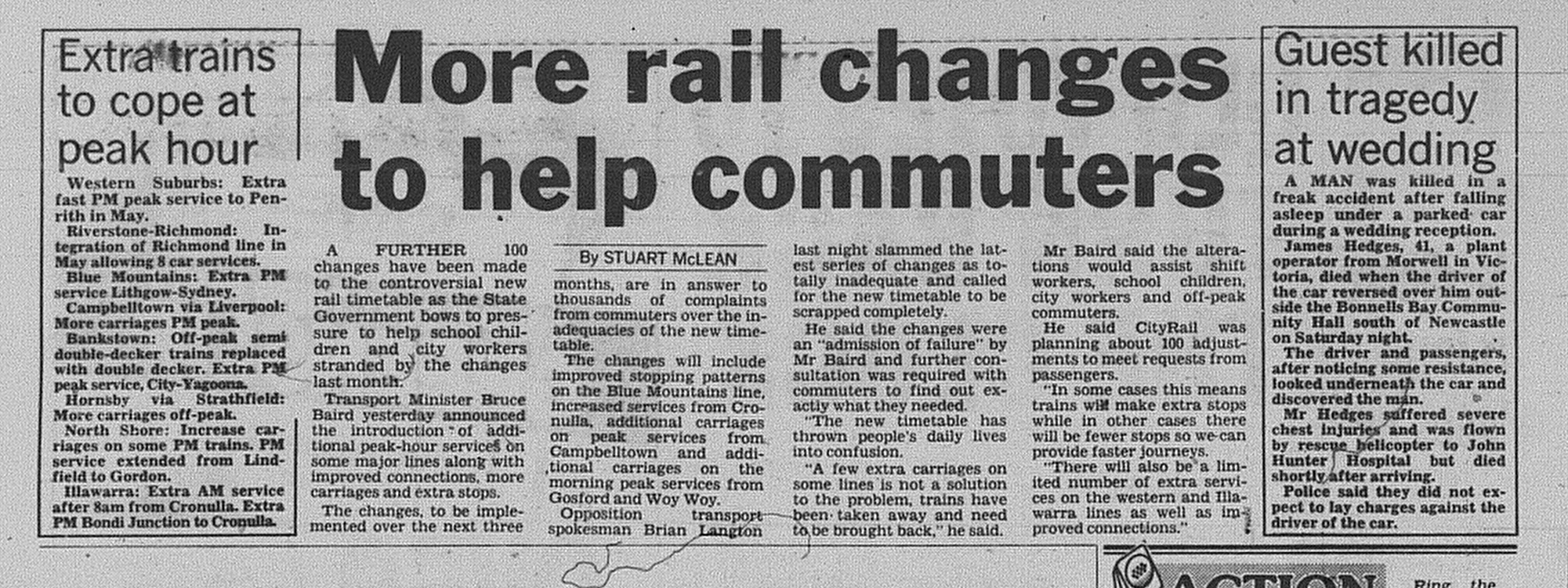Source: NSW Department of Main Roads. 1987. "A dollar well-spent" (Advertisement). The Sydney Morning Herald, May 30: 19.
In April 1987, the NSW State Government passed the Sydney Harbour Tunnel (Private Joint Venture) Act 1987 which gave formal approval for the construction of the Sydney Harbour Tunnel.
Source: Armstrong, D. 1987. "Bridge toll $1 from end of May". The Daily Telegraph, April 28: 7.
While the Sydney Harbour Tunnel would be tolled, the decision was made that month to increase the toll on the Sydney Harbour Bridge from 20 cents to $1, to aid in funding the cost of construction. The increase would commence on May 31 1987.
20 cent tolls
Between 1960 and 1970, motorists using the bridge paid a 10 cent toll each way (1 shilling prior to introduction of decimal currency in 1966). For those commuting in both directions, it would total 20 cents per day.
In 1970, the northbound toll was abolished to improve northbound traffic flow and the southbound toll was doubled to 20 cents to compensate for the loss of revenue (Click here to read more about it).
Therefore for the average commuter, the toll increase in 1987 would be the first increase to the toll since 1960.
How big was the increase?
The increase in the toll was 80 cents, but this represented a 500% increase. The commuter would now pay what was one week of toll payments in one day or five weeks of toll payments during the working week.
Adjusted for inflation (
RBA Inflation Calculator), motorists were paying the equivalent of 58 cents in today's money for a 20-cent toll. The increase to $1 would equate to paying $2.90 today which for many commuters is cheaper than current tolls ($4.27 in peak periods, $3.20 off-peak and $2.67 for overnight travel).
Toll Collectors Strike
Toll Collectors went on strike on the weekend of May 30 and May 31 1987, delaying the toll increase by one day. They refused a pay increase of 4%, arguing for even higher wages as they felt that they would be at increased risk of abuse from angry motorists and also robberies.
Source: Aubin, T. 1987. "The toll 1987: bricks and hot coins". The Sydney Morning Herald, June 1: 1.
The Reaction
Given the massive increase in the toll, this was not well received. For some, they responded by refusing to pay the toll, even though they faced fines of $50.
Warnings were given to drivers.

Source, Armstrong, D. 1987. "Big bills planned for toll evaders". The Daily Telegraph, April 29: 7.
On day one, traffic volumes during the morning peak hour decreased by nine percent. 44 drivers refused to pay the toll while 14 paid for their tolls using 1 and 2 cent coins only. The general mood to the incerase was not positive

Source: Grimshaw, P. 1987. "$1 toll slices bridge traffic". The Daily Telegraph, June 2: 4.
The toll dodgers and those who opted for payment solely in 1 and 2 cent coins were confronted by the toll collectors and police.

Source: Aubin, T & Coultan, M. 1987. "Drivers for who the $1 tolls". The Sydney Morning Herald, June 2: 1.
There was one backflip with the increase in tolls - 230 incapacitated service-men were exempt from paying the 20 cent tolls, but were required under the toll increase to pay the toll as with all other drivers. This was cancelled and they could continue to drive for free.

Source: Thomas, C. 1987. "Brereton does a U-turn for angry old diggers." The Sydney Morning Herald, June 1: 5.









.JPG)
.JPG)
.JPG)
.JPG)





.jpg)
.JPG)
.CR3)


















.CR2)











